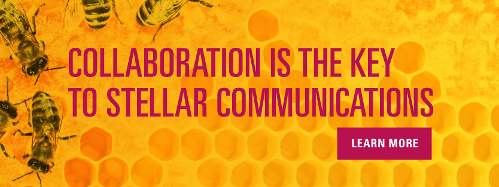
Smile, damn it.
While the message and words you deliver in either a media interview or marketing collateral are important to getting people to listen to you, one factor is often overlooked: a simple smile. Truth is, a smile goes a long way toward making people understand and trust you – two areas vital to effective communications.
Not All Smiles Are Created Equal.
There are actually two kinds of smiles. One is known as a “social” smile, or, worse, the “fake” smile. Those are the ones we usually use when someone is taking a photo, like a headshot or selfie. The other, or the “true” smile, is known as a Duchenne smile by scientists, named after the 19th century French doctor, Guillaume Duchenne, who identified it.
There is actually a physiological difference between the two. A true smile comes when our brain responds to our voluntarily raising the corners of our mouth (known as zygomatic major) while also involuntarily pushing up our cheeks and squinting our eyes. The social smile doesn’t have that second reaction, meaning we are smiling with our mouth, but not with our face. Interestingly, each smile is actually controlled by different parts of our brain.
So, when it comes to smiling, like in all parts of communications, being honest at your core is essential.
Smiles Open Doors.
Americans tend to smile more than most other cultures, and you can thank our melting-pot history for that. Given that, historically, our population has come from a range of places around the world, we’ve had a ton of folks speaking different languages who are trying to do business with one another. In order to open communications when there is a language barrier, the natural impulse is to smile.
As The Atlantic put it, “Americans smile a lot because our Swedish forefathers wanted to befriend their Italian neighbors, but they couldn’t figure out how to pronounce buongiorno.”
Smiles Equate to Trust.
Now that you know how to smile right, it’s important to know what that does. A few years back, a study in Europe looked at the effects of smiling on trust and economics. The study involved a group of people (trustees) who were asking for sums of money from a group of senders. The trustees recorded videos for the request, and the senders had no other conversations.
So what were the results? Trustees who smiled were generally more successful in getting money out of the senders. As the sums at stake went up, trustees who smiled more got more of the cash. Why? Because they were perceived as more trustworthy. Not only that, those trustees were considered both more intelligent and more attractive.
There were a number of reasons for this, one of which is physical. When you smile genuinely, it is almost impossible to break eye contact with someone. When you make eye contact, you are generally regarded as more deeply engaged and trusted.
Smiles Aren’t Always Right.
Of course, you want to be appropriate to the situation you’re in. You should be careful about situations where you’re talking about somber issues, or where you are called upon to show empathy for a difficult situation.
Also, you can’t walk around with a permanent smile on your face, or people will think you aren’t sincere.
But if you’re genuinely enthusiastic about your message and your mission, you should make sure you’ve turned that frown upside down. It can go a long way toward winning over media, customers and partners.
Effective communications starts with a smile. Not only is it important for your relationships with clients, customers and vendors, but with your own team as well. Download our free ebook to get our top tips for working collaboratively across departments:





Let’s Connect
Ready to build, grow, manage and protect your brand? Complete the form below to discuss how we can help.